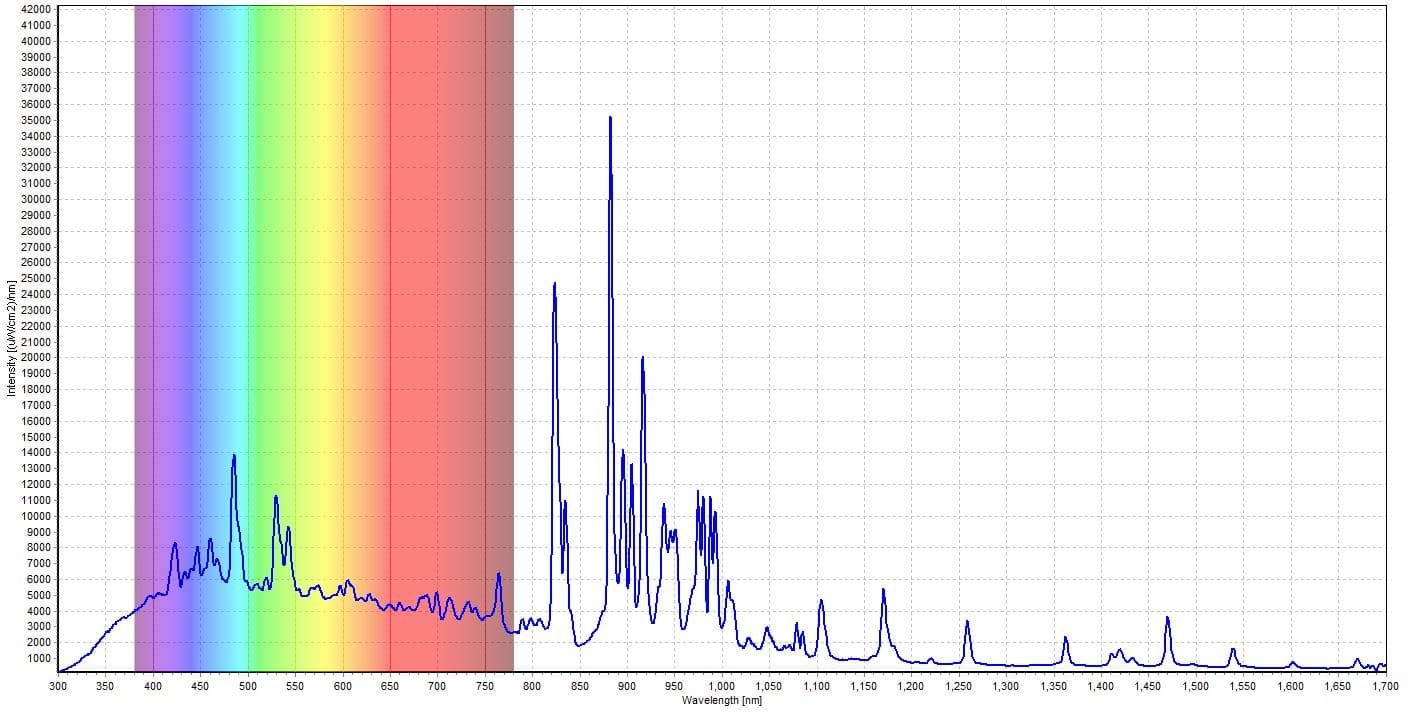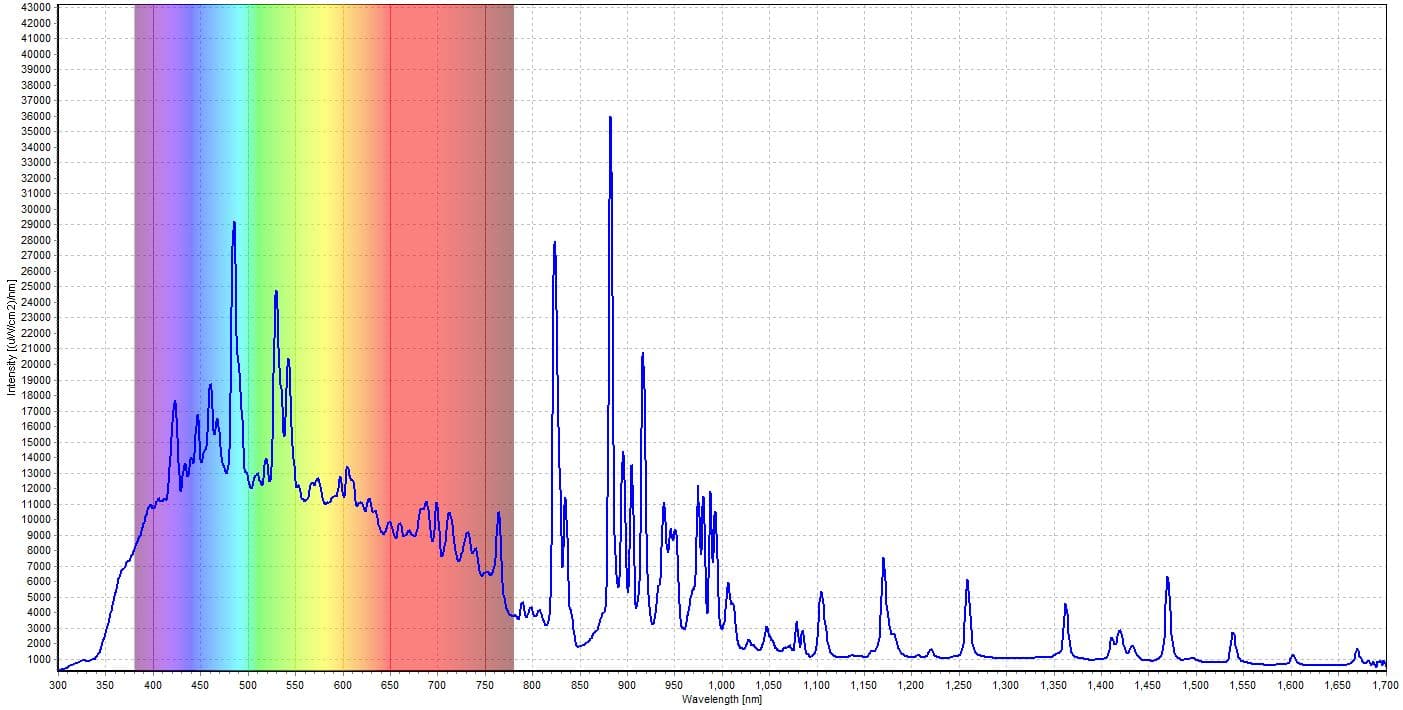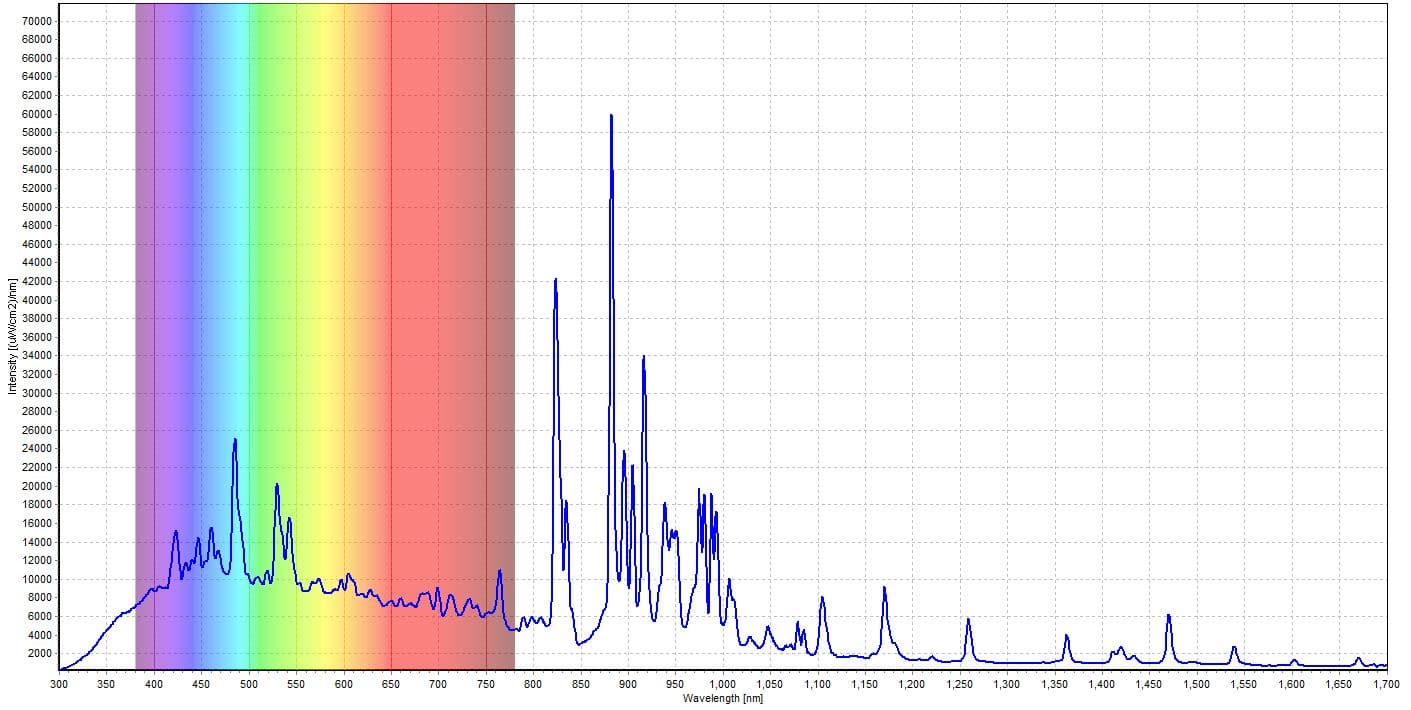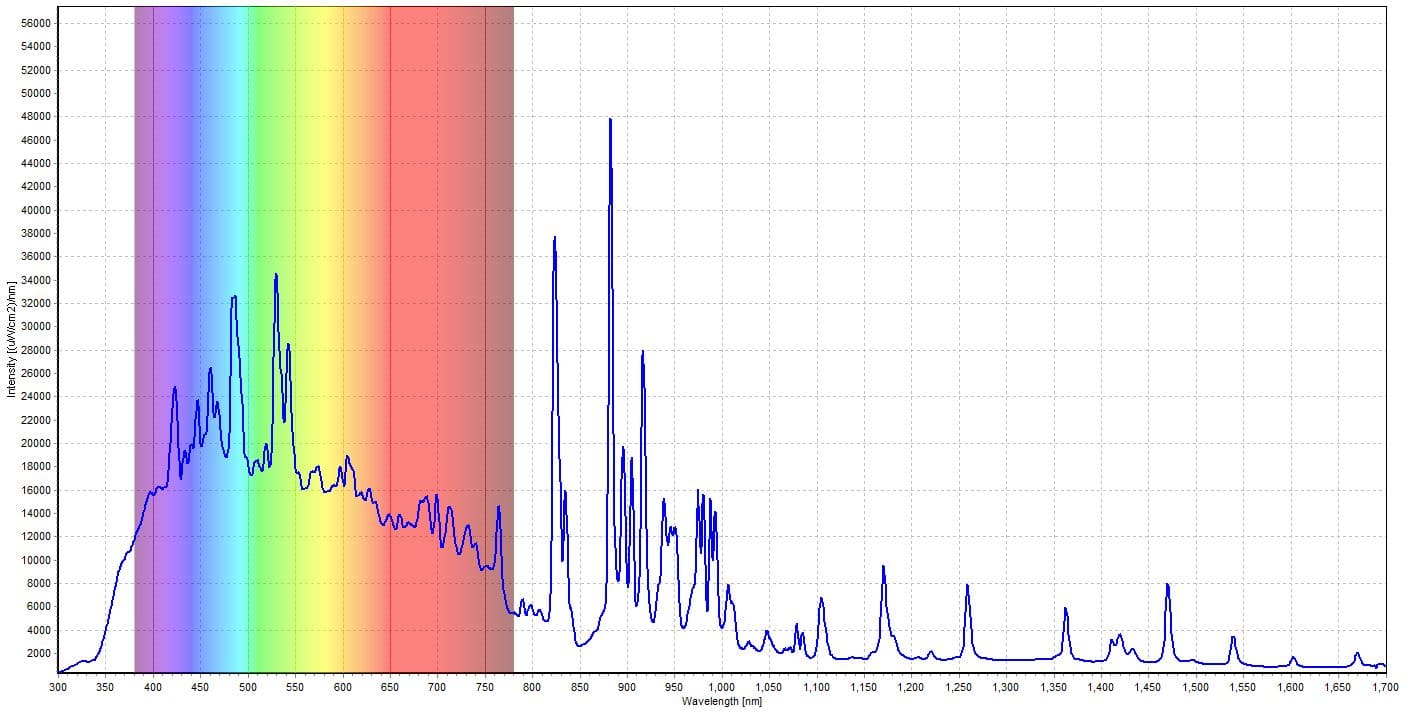Irradiance Measurement with Avantes Solar Simulator
Background/Applications:
Spectral irradiance is the irradiance of a surface per unit frequency or wavelength, depending on whether the spectrum is taken as a function of frequency or of wavelength. The two forms have different dimensions: spectral irradiance of a frequency spectrum is measured in watts per square meter per hertz (W·m−2·Hz−1), while spectral irradiance of a wavelength spectrum is measured in watts per square meter per meter (W·m−3), or more commonly watts per square meter per nanometer (W·m−2·nm−1). Irradiance is often called intensity because it has the same physical dimension.
Spectral irradiance is extremely useful in measuring the sun and solar simulators. A solar simulator (also artificial sun) is a device that provides illumination approximating natural sunlight. The purpose of a solar simulator is to provide a controllable indoor test facility under laboratory conditions, used for the testing of solar cells, sunscreen, plastics, and other materials and devices. Therefore, it is important to properly test and characterize solar simulators
Description of System:
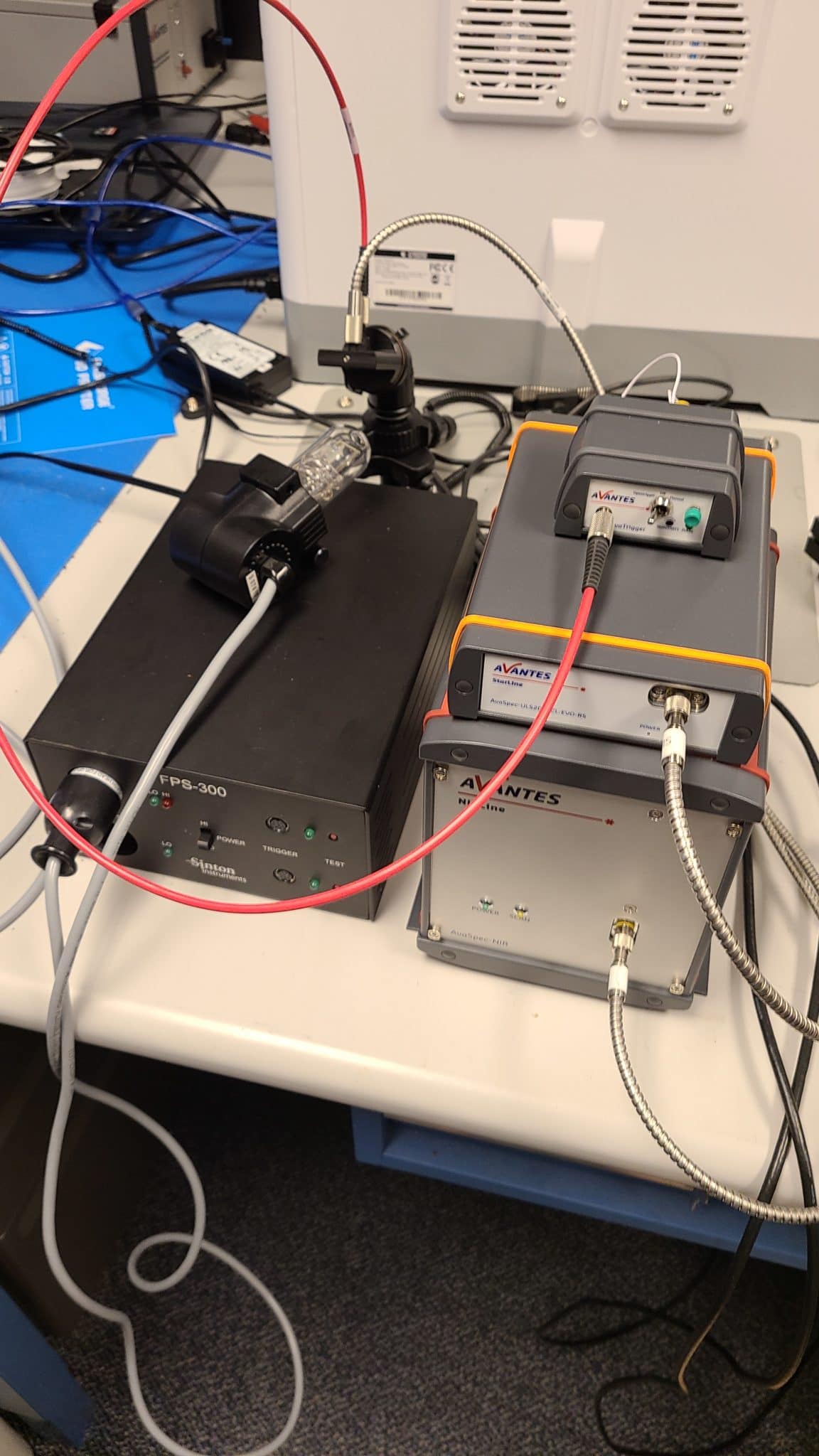
Figure 1: The setup for the experiment.
The setup for this experiment utilizing a dual-channel setup, consisting of an AvaSpec-ULS2048CL-EVO (configured for 300 nm to 1100 nm) and an AvaSpec-NIR512-1.7-HSC-EVO (900 nm to 1700 nm). The two spectrometers are synchronized with one another to allow for simultaneous data collection. An AvaTrigger is also used to trigger the spectrometers to scan when the solar simulator lamp flashes.
Using CMOS instead of the conventional CCD technology, this spectrometer is completely up to date and ready for the next decade. The dominant position of CCD detectors in the spectrometer field is fading and new technologies like CMOS have evolved and become a suitable alternative. The AvaSpec-ULS2048CL-EVO offers you this latest technology ensuring a spectrometer platform for the coming years. In combination with our latest AS-7010 electronics, the AvaSpec-ULS2048CL-EVO offers you a versatile device including USB3.0 communication with 10 times higher speed compared to USB2, and a second communication port which offers Gigabit Ethernet for integration in your company network and the possibility for long-distance communication, all at an affordable price. Besides the high-speed communication options, the EVO series spectrometers also offer a fast microprocessor and 50 times more memory capacity, which can help you to store more spectra onboard and realize more functionality.
For measurements in the near-infrared range up to 1.7 µm, Avantes offers a new series of cooled spectrometer configurations. The AvaSpec-NIR256-1.7-HSC-EVO and the AvaSpec-NIR512-1.7-HSC-EVO offer the high-sensitivity100mm optical bench (HSC) with the next generation of electronics (EVO). For applications where resolution is key, or more data points for modeling are required, the 512-pixel detector will be the best choice. The AvaSpec-NIR256/512-1.7-HSC-EVO spectrometers pair the same trusted InGaAs array detectors with our ultra-low-noise electronics board, featuring a USB3 and Giga-Ethernet connection port. The instruments are equipped with a Replaceable Slit. Digital and analog I/O ports enable external triggering and control over the shutter and pulsed light sources. Choose from two distinct software-controlled gain-setting modes: high-sensitivity mode (HS, default) and low-noise mode (LN). Cooling ensures optimum noise conditions, even at longer integration times. All NIR-1.7 instruments are available with a choice of four different gratings, making it possible to choose the bandwidth fitting your application.
The optical trigger is useful for measuring pulsed light sources, such as solar simulations. Your Avantes spectrometer can start integrating within 1.5 microseconds after receiving the signal from the AvaTrigger. Alternatively, you can specify a delay time if you are interested in measuring spectral output against time (temporal stability). The AvaTrigger has an SMA-905 connector to easily couple with any accessory or light source from Avantes’ extensive line-up. The sensitivity of the optotrigger can be adjusted by a potentiometer at the front. A green LED indicator on the front panel of the AvaTrigger shows a short pulse when a TTL pulse is sent to your spectrometer.
We will be utilizing a solar simulator, courtesy of Sinton Instruments, for our testing.
Description of Methodology:
For this experiment, we will be utilizing the AvaSpec-ULS2048CL-EVO and AvaSpec-NIR512-1.7-HSC for a merged irradiance spectrum measurement of the solar simulator, in high power and low power modes. A filter will be utilized as well for Class A and Class B classifications.
For our data collection, we will be utilizing the irradiance measurement package in the AvaSoft software.
Test Data
Analysis:
Our system was able to successfully classify Class A and Class B flashes from the solar simulator, with an A rating.
Each dimension is classified in one of three classes: A, B, or C. The specifications required for each class are defined in the table below. A solar simulator meeting class A specification in all three dimensions is referred to as a Class A solar simulator. This classification was performed courtesy of Sinton Instruments, who classify solar simulators.
| Classification | Spectral Match (each interval) | Irradiance Spatial Non-Uniformity | Temporal Instability |
| Class A | 0.75–1.25 | 2% | 2% |
| Class B | 0.6–1.4 | 5% | 5% |
| Class C | 0.4–2.0 | 10% | 10% |
A sample spectrum of the solar simulator also demonstrates the accuracy of Avantes instruments to aid in these classifications.
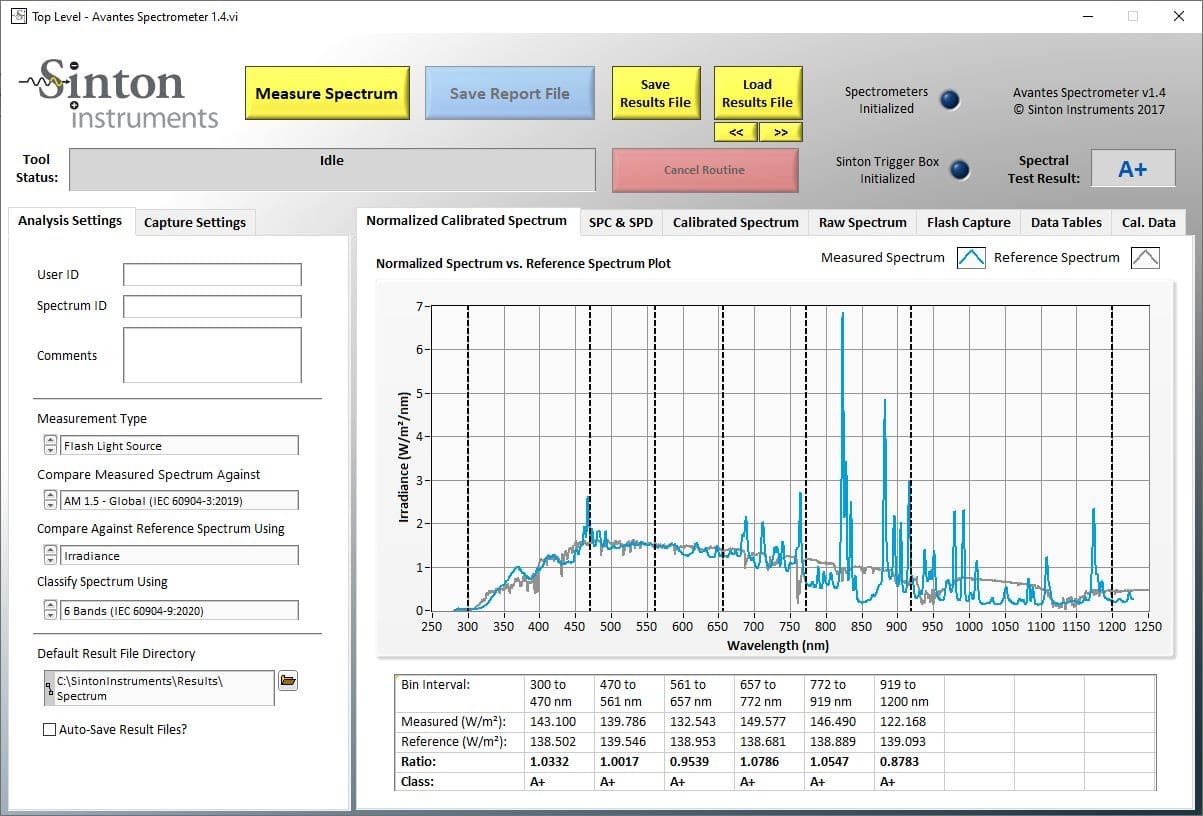
Conclusion:
The spectra from the solar simulator proves that the Avantes instruments provide an excellent method for solar measurements and classification. Please contact your Avantes sales representative to determine how Avantes instruments can assist your application.
 My Cart
My Cart 
